Featured Message
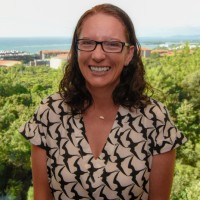
ʻOhana in Every Season: Gratitude that Grows at HPU
“Gratitude runs through the veins of our student leadership at HPU, continuing the tradition of ʻOhana Fall Feast with service to students.” Robyn Serge
At HPU gratitude is more than a sentiment; it’s a practice of aloha, service, and connection that strengthens the bonds of our campus community. Each year, our student leadership programs—the Campus Activities Board and Student Government Association—host the ʻOhana Fall Feast, a Thanksgiving celebration for students who remain on campus during the holiday.
For many mainland students, it offers a comforting sense of home. For our international students, it’s a joyful introduction to a new tradition. There’s nothing like seeing their faces light up when the turkey is served! This event is always filled with delicious food, laughter, and appreciation. Our executive leadership and academic deans join in serving meals, modeling humility and the spirit of giving that define our HPU ʻohana.
The ʻOhana Fall Feast beautifully reflects HPU’s Strategic Plan, putting People First, strengthening our Connected Campus, and honoring our Sense of Place. It is a living expression of who we are: a community that values relationships, celebrates culture, and creates memories that last.
Each year, I am moved by the compassion and attention our student leaders bring to every detail, from decorations to service. Their efforts remind us that leadership begins with empathy and that gratitude grows when we give of ourselves.
For our alumni, this tradition continues a legacy you helped build. Many of you remember moments like these. The shared meals, late-night conversations, and friendships that became your HPU family. Your generosity, mentorship, and aloha spirit make it possible for today’s students to experience that same sense of belonging.
Mahalo nui loa for carrying these HPU values wherever your journey takes you. Your ongoing support and spirit of aloha help us ensure that every student feels at home here. Together, we keep the tradition of gratitude alive for generations to come.
Come eat and come home to HPU.
Warmly,
Robyn Serge, M.A.T.
Assistant Dean of Students, Director of Student Engagement
Hawai‘i Pacific University
Previous Featured Messages
 As Acting Dean of the College of Natural and Computational Sciences, I’m delighted to share the latest updates from our vibrant HPU STEM community. This fall, as HPU celebrates 60 years of innovation and excellence, we honor the remarkable achievements of our faculty, students, and alumni, whose work continues to shape science, education, and conservation—not just here in Hawai‘I, but around the world.
As Acting Dean of the College of Natural and Computational Sciences, I’m delighted to share the latest updates from our vibrant HPU STEM community. This fall, as HPU celebrates 60 years of innovation and excellence, we honor the remarkable achievements of our faculty, students, and alumni, whose work continues to shape science, education, and conservation—not just here in Hawai‘I, but around the world.
I turn, I see the impact of our CNCS ʻohana. You’re out there leading research, mentoring young scientists, protecting ecosystems, and finding creative solutions to global challenges. Staying connected with you reminds us why we do what we do—it’s about people, relationships, and a shared commitment to making a difference.
Our faculty have been busy advancing research and sharing their expertise globally.
- Yi Zhu presented groundbreaking AI research at the AIM-AHEAD Annual Meeting in Dallas, focused on how machine learning can be used in suicide prevention among Hawaiian youth and the prediction of lung cancer in the Hawaiian population.
- Mary Smith contributed to international dialogue on computing education at IPDPS in Milan and participated in an NSF CyberTraining workshop.
- Trisha Young led biomechanics research with engineering students and presented her innovative work on using hula as a balance intervention at ‘Aha Ho'olokahi, the Native Hawaiian health summit hosted by Papa Ola Lokahi.
In the natural sciences, research and teaching continue to thrive.
- Carmella Vizza’s students showcased their work on the effects of Genki Balls on water quality at the Hawai‘i Conservation Conference. Dr. Vizza also secured a $500,000 NSF grant to study sea-level rise and methane cycling.
- Kim Mullane was awarded a $243,000 NSF grant to support early-career pathways in chemistry.
- Brenden Holland published research on invasive cane toads and proposed a study on the coqui frog invasion of O’ahu, and
- David Horgen received NIH RO1 funding in collaboration with Queen’s and Oceanit to study cannabinoids and pain relief.
Our marine science community—faculty, students and alumni alike—also made waves.
- Elsa van Hall, an MSMS alumna and former Marine Science lecturer, has published a portion of her thesis on the physiology of yellow tang.
- David Hyrenbach and two MSMS alumni, Mikinley Weaver and Syndey Brown, published a journal article about ectoparasites on Hawaiian wedge-tailed shearwaters.
- BS Marine Biology and MSMS alumna, and now Assistant Professor of Biology, Dr. Jessica Jacob, received INBRE seed funding and a charitable grant for a new project with implications for the tuna canning industry.
- Matt Iacchei and his lab continue their genomics research on ʻamaʻama fish, funded by the state legislature, and presented findings at the Hawai‘i Conservation Conference.
- At our Center for Marine Debris Research, faculty and students continue their pioneering work transforming ocean plastic into durable construction materials at their Plastic Recycling Research Facility.
This fall marked the launch of two exciting new programs for CNCS. The Master of Science in Medical Science, developed in partnership with Tiber Health, welcomed its first cohort of 8 students under the direction of Dr. Celeste Lajala. The MS Medical Science will prepare students for the rigors of professional health graduate programs. Additionally, the Bachelor of Arts in Biology with a focus on Human Health Sciences was introduced to align with HPU’s professional doctorate programs in physical and occupational therapy.
We are proud to share that CNCS alumni are making an impact through both advanced studies and professional work. This fall, several alumni have begun graduate programs in fields such as marine science, environmental studies, and biology at leading universities, including Texas A&M, the University of Rhode Island, the University of Arkansas, and UH Mānoa, continuing the legacy of CNCS graduates in research and conservation.
In the workforce, alumni are contributing across diverse fields including environmental conservation, marine biology, public service, and education. They hold roles as rangers, biological technicians, scientists, educators, and Peace Corps participants, working with organizations such as national parks, research institutes, aquaculture labs, and conservation programs. Through their studies and professional efforts, these alumni advance HPU’s mission and values while positively impacting communities both locally and globally.
These are just a few examples of how recent CNCS faculty and recent graduates are making a meaningful impact and building a brighter future for the planet and for our ‘ohana. This month’s Kai Ulu alumni spotlight features Samantha Avina, highlighting the importance of alumni engagement in celebrating HPU’s 60th anniversary. We’d love to hear your story too— please send your updates to cncs@hpu.edu.
And don’t forget to join HPU Career Connections— it’s an easy way to stay involved, mentor students and grow your network. Your participation strengthens our CNCS ʻohana, inspires the next generation of Sharks, and helps build a vibrant alumni-student community for decades to come.
With aloha,
Carrie Jones
Acting Dean, CNCS
Hawai‘i Pacific University

HPU Celebrates 60 Years of Innovation and Impact!
On September 20th, Hawai‘i Pacific University joyfully celebrated its 60th Anniversary, bringing together our HPU ‘ohana and community at Aloha Tower Marketplace.
It all began in 1965, when four visionary leaders gathered in a Manoa home with a bold dream: to create an independent, nonsectarian college that would strengthen the workforce, offer hands-on learning, and serve the community.
From those humble beginnings with just a handful of students, HPU has grown into a vibrant university of nearly 8,000 students from all 50 states and over 40 countries, with more than 55,000 alumni around the world. Today, we teach across Hawai‘i and beyond—downtown, at Makapu‘u, on military bases, in Las Vegas, and even select programs in China.
To our students, alumni, faculty, staff, trustees, and friends—mahalo for being part of this incredible journey.
Here’s to the next 60 years of learning, growth, and aloha!
John Y. Gotanda
President
at Hawai‘i Pacific University

A Message from Jon Davidann: How Being Up in the Air Changed My Life
Jon Davidann, Ph.D. Professor of History at Hawai'i Pacific University
I have spent 28 years at HPU shaping young minds into budding historians who understand the importance of historical perspective, which is when we look to the past to help explain the present. My students also learn to use context historically and in their own lives in today’s world. These two ways of thinking allow them to thrive in a transforming world where much that we assumed is true seems adrift.
It is my firm belief that as we enter a more uncertain age, storytelling will assume greater importance in the world’s twenty-first-century societies. I have a personal story I’d like to share with you.
One day, I was twenty feet up in the air, covered in paint, exhausted, wondering how I got myself into this mess. Standing on a ladder with a brush in hand, I started thinking about what to do with a house I owned in Kailua, Hawai’i, that I was repainting. I could sell it, but the capital gains tax was daunting. I could do a 721 exchange or a 1031 exchange, but neither appealed to me.
So, literally and figuratively up in the air, I thought, what if I donate it? I knew vaguely that something like this could happen, and I knew that I wanted to give back to HPU. It is a place where I see so many of my core values enacted through our students and graduates. From HPU’s enduring commitment to international education to its number one standing as the most diverse university in the U.S., from its dedication to student learning to its hands-on approach to education, from its liberal arts mission to its substantial scholarships for students in need, HPU has always been an ideal place in which to thrive.
I climbed down off the ladder (the fact that I did not fall off the ladder was itself an achievement), and I called Maureen Silva, HPU’s Vice President of Advancement. It was a call that changed my life and will offer significant resources to HPU in the future. Maureen arranged for my wife, Beth, and me to donate our house to through HPU ‘s partnership with the National Gift Annuity Foundation, which invests the proceeds from the sale of the property and gives us alifetime annuity, and then, when we pass from this mortal coil, HPU receives the remainder as a gift in perpetuity. We also received a sizeable tax deduction that can be used over six years as part of the transaction. It's a win-win-win!
HPU has made my career as an academic historian possible, and I have had the privilege of teaching many excellent students. An example of the benefits of HPU's historical training—and a great storyteller himself—is a former student and friend of mine, Anthony Katz. You’ll hear more from Anthony in his Alumni Spotlight, but Anthony took classes from me in the early 2000s. He was one of the most intensely curious and confident students I have ever had. Combining his thinking skills and other aptitudes acquired at HPU with his inventive mind, Anthony turned them into an incredibly successful career as founder and head of Hyperice, a $700 million sports recovery equipment company. Anthony credits HPU’s history training for helping him to contextualize his business in very sophisticated ways, including his recent decision to form an alliance with Nike Corporation. He sees not just the current competitive environment of his industry, but he also sees its evolution and its future prospects.
In his own telling, one of Anthony’s strongest memories of HPU took place on September 11, 2001, after the attacks on the World Trade Center. All classes had been cancelled, but after a day of watching the events unfold on TV, he headed to HPU for an informal meeting with his professors and a classroom full of anxious students to discuss what had just happened. It was helpful to process the tragedy together and put aspects of it into an historical context.
Experiences and stories like these help to explain why, when Beth and I designated our gift to HPU, we included a preference for storytelling interests and capabilities in the History major student scholarship we established in the College of Liberal Arts. We also established a student scholarship in the HPU Public Health major in honor of Beth’s career as a public health professional.It should be acknowledged that the Office of Advancement went above and beyond the call of duty to help us make this gift happen. And the National Gift Annuity Foundation was great to work with. Beth and I could not be more pleased with our decision.
From being up in the air to putting our feet squarely on the ground, we made the decision to invest in HPU’s future. It is our hope that generations of students—future storytellers—can benefit from our gift.
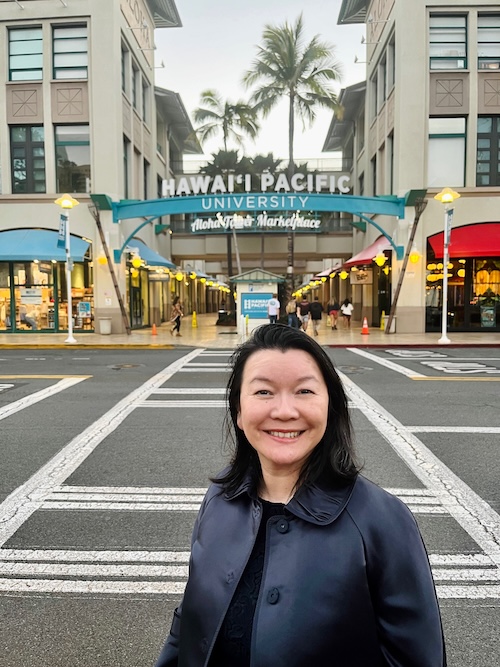
Shaping the Future: Entrepreneurial and Globally Minded Education
Dean Amy Nguyen-Chyung, College of Business at Hawai‘i Pacific University
Aloha HPU Alumni,
It’s a true honor to greet you as the new Dean of the College of Business at Hawai‘i Pacific University. Since stepping into this role on July 1, I’ve been energized by the possibilities that lie ahead—not only for the college, but for all HPU students, faculty, and alumni.
Higher education is undergoing significant change. Pressures on institutions, rapid advancements in technology, shifting student needs and global trends are reshaping how we teach and learn. Business education, in particular, is being redefined by new formats and the ever-changing nature of work. Amid all the challenges, there’s also an opportunity for us to make strategic choices about where we will rise to meet the evolving needs of the market.
Before my official start, I had the privilege of collaborating with university leadership on a few key initiatives—most notably the launch of the John F. Scarpa Entrepreneurial Pathway, featured in this issue of Kai Ulu, and introduced in our recent press release. Coordinated from the College of Business, this university-wide initiative will embed entrepreneurial thinking across all disciplines at HPU.
Our aim is to instill skills such as dealing with ambiguity, creative problem-solving, experimentation, and collaboration in teams—tools essential for navigating a rapidly changing world. It’s about preparing future leaders who can innovate, adapt, and thrive in any environment.
The John F. Scarpa Entrepreneurial Pathway is just the beginning. Additional new programs within the COB reflect our commitment to serving both our students and workforce needs of Hawai‘i and our global community:
- General Contractors Association Master of Science in Construction Management—Our first cohort is on track to graduate in August 2025. Even before the program’s launch, HPU engaged with local industry leaders, including the General Contractors Association and Trade Media Hui (both of which generously invested in start-up funding), to ensure we’re aligned to help build the pipeline and equip students with hands-on experience. New instructors with substantial industry experience will join us this fall, and we’re moving to online hybrid format to be able to serve a broader student base.
- Expanded Military-Connected Offerings—Identifying new programs and services that can support the outstanding military-affiliated students who bring such talent and leadership to our community.
While growth is a major goal, my focus as Dean will be to foster a student-centered environment, identify our core strengths, and find smart avenues for growth. I see my role as both a listener and leader. HPU values every story, every background, and every journey. And as alumni, your experiences are vital to who we are and who we’re becoming.
It is important for us to understand what matters to you and inspires you, the challenges you face and the hopes you have for the next generation of students. It’s through your insights and involvement that we can continue to evolve in meaningful ways. Whether you’d like to guest lecture, mentor students, sponsor a project or internship, or simply share your story, there are countless ways to support the next wave of HPU students.
I’m excited to lead the College of Business into a bold new era, working with partners across and outside the university so that our students are both well prepared to enter the workforce and capable of helping to shape it. That transformation starts by harnessing one of our most valuable assets: our alumni network. You are central to HPU’s continued growth and to the evolving vision of the College of Business and the university.
Learning from your experiences, hearing your ideas and dreams about what HPU can build—that is invaluable! Together we will push forward with purpose, with passion, and with the shared belief that HPU will continue to serve as a national model for what modern, entrepreneurial, and globally minded education looks like.

Jeffrey Rich, Vice President of Marketing and Communications and Chief Communications Officer, Hawaii Pacific University
“Alumni Are Our Strongest Ambassadors”
Aloha HPU Alumni!
As Hawai'i Pacific University continues to grow and evolve in today’s competitive higher education landscape, one thing remains constant: the power of our alumni community. As the University's Chief Communications Officer, I have the unique privilege of helping tell the HPU story every day through campaigns, social media, media relations, digital content, and community outreach. But no story is more compelling than the one told by you, our graduates.
You are the living proof of the value of an HPU education. Whether you’re making an impact in healthcare, technology, education, business, public service, or the arts, your achievements and your voice carry weight. When alumni proudly share their experiences and recommend HPU to prospective students, it amplifies our reach and strengthens our brand in ways no advertisement ever could. That’s why I want to personally invite you to get involved in helping HPU continue to thrive. Here are some easy and powerful ways you can support the university:
Be a Brand Advocate on LinkedIn
Your professional network is a perfect place to showcase your HPU connection. Add HPU to your LinkedIn profile, follow our University page, and engage with our posts. Better yet, share your own HPU story—from a class that changed your perspective to a professor who shaped your path. These organic testimonials humanize our brand and help future students imagine their own journey here.
Help Recruit Future Sharks
Do you know a student looking for a university that blends rigorous academics with real-world experiences in an extraordinary location? Tell them about HPU. Refer prospective students to our Admissions team or connect them with our website at hpu.edu. Even better, introduce them to one of our new innovative programs—like the accelerated three-year bachelor's degree in global business, or our flexible graduate programs in health sciences, business, diplomacy, and beyond.
Share on Social Media
Social media is a powerful way to grow the HPU community and celebrate our alumni. Follow HPU across all platforms—and don’t forget to check out @HPU_Legacy on Instagram for alumni stories, milestones, and more.
Share your own HPU moments, photos, or news articles to help us expand our reach. Use hashtags like #HPUAlumni and #SharkPride, and tag us so we can see and amplify your post:
- Instagram: @hawaiipacificu
- Facebook: Hawaii Pacific University
- LinkedIn: Hawaii Pacific University
- TikTok: @hawaiipacificu
Celebrate and Amplify HPU’s Success
When you see HPU featured in the news, ranked highly in a college guide, or spotlighted in a national campaign, share it. Help us take pride in those wins together. And if you or another alum receive recognition in your professional field, let us know by emailing us at ua@hpu.edu or share on one of our social media platforms.
At HPU, our greatest strength is our people—our motivated students, dedicated faculty and staff and proud alumni around the world. As we shape a bold and modern brand for a university on the rise, I invite you to help amplify our story. Your voice, your journey and your pride in HPU are powerful ways to inspire others and strengthen the extraordinary Shark ‘ohana.
Warmest Aloha,
Jeffrey Rich
Vice President of Marketing and Communications
Chief Communications Officer
Hawai‘i Pacific University
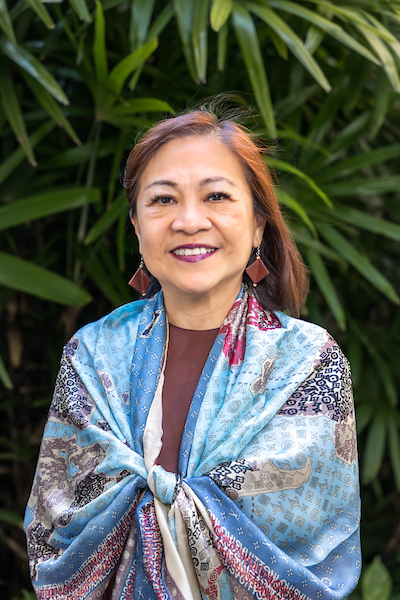
As we celebrate Nursing Awareness Month, I want to share my heartfelt appreciation for the remarkable achievements of HPU’s nursing students and the meaningful impact they make in our communities. I also extend deep gratitude to our dedicated alumni who embody the values of compassion, leadership, and service in their daily work. Whether you’re serving in hospitals, public health organizations, or communities around the world, your contributions are recognized and deeply valued.
As I reflect on my own journey into nursing, I’m reminded of how personal this calling can be. I immigrated to the U.S. with my siblings, and it was my mother—a pharmacist in the Philippines—who encouraged my sister and me to pursue nursing. I have now been a registered nurse for nearly 38 years. I earned my BSN from the University of Illinois at Chicago and went on to receive a Master of Science in Nursing as an adult primary care nurse practitioner from the University of Maryland at Baltimore. Later, I pursued a doctoral degree in Education, solidifying my commitment to shaping the next generation of nurses and advancing nursing education at the university level.
This journey led me to HPU, not once, but twice. I first taught here as adjunct faculty from 1998 to 2002 and returned after years away due to my husband’s service in the U.S. Coast Guard. I came back because I saw in HPU something truly special: a community where local, mainland, and international students come together, bringing their stories, values, and perspectives to the classroom and beyond. At HPU, we learn not just from textbooks, but from each other.
What excites me the most today is witnessing our students’ growth and their impact in the community. I’ve had the privilege of meeting alumni who now hold leadership roles in major healthcare systems and serve in professional nursing organizations. It’s inspiring to hear about graduates who were once student organization leaders here at HPU and now serve as leaders in their communities.
Just last month, I saw our clinical and pre-clinical students step up as ambassadors for the School of Nursing at a Sharky’s Legacy event. They welcomed prospective students with confidence and warmth, proudly sharing what makes their experience at HPU so transformative.
On April 17, our graduating seniors presented their evidence-based projects to peers, faculty, and clinical partners from major hospitals. These events not only showcase our students’ capabilities, but they also reinforce why our graduates are often preferred hires. Our faculty mentors play a critical role in this, supporting research, fostering innovation, and guiding students as they develop into thoughtful, culturally aware practitioners.
Looking ahead, I envision a vibrant alumni network—one grounded in pride, professional partnership, and a shared commitment to mentorship. Imagine a nursing and public health alumni association that offers continuing education, supports scholarships, and fosters connections across generations of Sharks. We’re already seeing the power of alumni engagement through guest lectures, project judging, and adjunct teaching. But I know there is even more we can build—together.
At HPU, we remain grounded in kuleana (shared responsibility), pono (integrity), and aloha (giving back). These values shape how we teach and how we prepare students for an evolving healthcare landscape—one that demands reflective leadership, resilience, innovation, and cultural humility.
The future of nursing is transformational. Nurses are stepping into new roles—not only as providers, but as policymakers, researchers, and innovators. HPU is committed to preparing our students to lead with empathy, adapt to technology-driven systems, and address the social determinants of health that influence every patient’s story.
To our alumni: please know that you are always welcome here. Your story is an essential part of HPU’s story. I invite you to stay connected, share your journey, mentor the next generation, and help us continue to grow a program rooted in excellence, aloha, and shared purpose.
Mahalo for all you do!
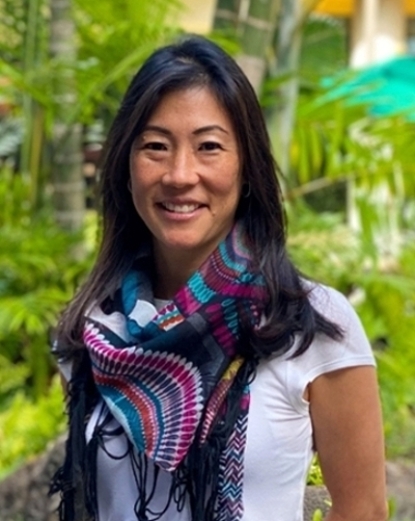 I love my job, because I wholeheartedly believe that studying abroad is one of the most effective ways to enable students to be successful academically, professionally, and personally.
I love my job, because I wholeheartedly believe that studying abroad is one of the most effective ways to enable students to be successful academically, professionally, and personally. Students who study abroad gain a comprehensive set of life skills and competencies and expand their world views. When they are pushed out of their comfort zone and forced to navigate another country with different societal norms and culture, different rules and educational systems, different transportation system, and sometimes a different language, they grow in countless ways.
- They learn to be effective problem solvers.
- They learn how to be flexible and adaptable in negotiating unexpected situations, and how to hold their composure in stressful situations when the sky feels like it’s falling.
- They develop cross cultural communication skills and learn how to effectively work with people from so many different backgrounds.
Even if they never work internationally in the future, we all must work with people we don’t always see eye to eye with. As they uncover the nuances of a foreign country and engage with people from all over the world, students develop a sense of empathy and appreciation for cultural diversity, global perspectives on critical issues impacting our world and realize how interconnected the world really is. This is where diplomacy starts and why studying abroad fosters global security and prosperity.
I see firsthand how students gain tremendous self-confidence and self-reliance in realizing what they’re truly capable of. As they are challenged and stretched, they discover what they are passionate about and the kind of difference they want make in the world while gaining the skills and network to make it reality.
Employers from every industry recognize the value of studying abroad. This is why 97% of students who study abroad secure a job within their field within one year of graduating, compared to 49% who do not. They also earn higher salaries both immediately after graduation and over time.
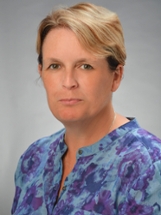
A Message from ALLISON GOUGH, PH.D.
Having the unique experience of overseeing two different colleges at HPU has underscored how entrepreneurship thrives at the intersection of disciplines, blending business acumen with creativity and a commitment to societal impact. The most successful entrepreneurs often have a mix of liberal arts and business backgrounds, a combination that cultivates both innovative thinking and practical skills for identifying and acting on opportunities. If someone like Leonardo da Vinci were alive today, he would undoubtedly be considered a knowledge entrepreneur, harnessing ideas from business, the arts, and science to address complex challenges and to develop unique solutions and using testing and experimentation as part of the design process.
Entrepreneurship is ultimately a mindset that transcends any one field or major. Although traditionally associated with launching businesses for profit, today’s students are often motivated by a drive to make meaningful, positive change. Many now focus on purpose-driven entrepreneurship, creating ventures that are as much about social, cultural, and environmental impact as they are about financial success. Our students analyze models of social entrepreneurship from around the world by examining such brands as Tom’s, Kiva, and Solar Sister and learn to create for themselves mission driven business models and sustainable revenue frameworks, and how to measure and scale social impact.
The most impactful entrepreneurship aligns profit with purpose. It seeks sustainable, long-term gains rather than short-term wins, driven by the belief in the transformative power of ideas to empower others—whether through microloans, community-based projects, or innovations in technology.
The future of entrepreneurship will also have to increasingly incorporate AI and other technologies to solve complex problems, both business and social. Faculty across colleges are currently working under an NIH grant to explore leveraging AI in the provision of social and counseling services through a new app.
In this way, entrepreneurship education now prepares students to identify both business and societal challenges, equipping them to use interdisciplinary tools to create solutions that deliver not only economic value but also meaningful, lasting contributions to society.
I invite you, our alumni of HPU, to join HPU Connect—an opportunity to mentor, inspire, and support the next generation of entrepreneurs. Together, we can empower future leaders to thrive in a global society and drive lasting impact through innovation and leadership.
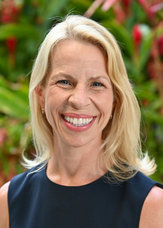
At HPU, our core values—Pono, Kuleana, and Aloha—are the foundation of our mission and vision, shaping our approach to education and community engagement. As we expand to Las Vegas with our Doctor of Occupational Therapy (OTD) and Doctor of Physical Therapy (DPT) programs, we remain deeply committed to these values, embedding them into our curriculum, teaching methods, and the ethos of our Graduate College of Health Sciences.
Pono, Kuleana, and Aloha in Las Vegas
- Pono reflects our unwavering commitment to doing what is right. It drives our decisions and actions, ensuring that we maintain the highest levels of integrity and ethical standards in all we do.
- Kuleana represents responsibility and accountability. It calls on every member of our community—students, faculty, staff, and alumni—to uphold excellence in personal and professional conduct.
- Aloha encompasses love, compassion, and mutual respect. It fosters an inclusive and supportive environment, guiding our interactions and relationships within the Las Vegas community.
One particularly meaningful aspect of Aloha is the concept of “waiting for the right moment.” This principle resonates deeply with our expansion to Las Vegas, marking a historic milestone as HPU becomes the first Hawai‘i-based university to establish a campus on the continental U.S. This moment reflects the alignment of our mission, values, and vision, as we bring the spirit of Hawai‘i to new communities and create opportunities for transformative education and service.
Aligning with the Community
There is a deep connection between Hawai‘i and Las Vegas, often referred to as the "9th Island," due to the many Hawaiians and local residents who visit or have made it their home. At our Las Vegas campus, we are committed to honoring and strengthening these ties by embedding Hawaiian values into our community activities and initiatives. We are actively seeking partnerships with local organizations to enrich our students’ understanding of Hawai‘i’s rich history and cultural contributions. These efforts aim to create meaningful bridges between our campus and the Las Vegas community, fostering a sense of belonging and introducing Hawaiian culture and values to those who may not yet be familiar with them.
Alumni Involvement
We envision our current and future alumni playing a vital role in our OTD and DPT programs and the Las Vegas community. Opportunities for engagement include job placements in local health systems, clinics, and schools, as well as roles as adjunct faculty, clinical and fieldwork instructors, and guest lecturers. These partnerships not only enhance the educational experience for our students but also create pathways for alumni to remain actively involved in shaping the next generation of occupational therapy and physical therapy professionals. By fostering these connections, we strengthen our network of graduates, amplify our impact, and build enduring relationships that benefit both our alumni and the broader Las Vegas community.

As we step into a new year, it’s a joy to reconnect and celebrate the growth of our alumni community. Each of you exemplifies the enduring values of Hawaiʻi Pacific University—aloha, pono, and kuleana —and your achievements inspire the next generation. Today, I’m excited to share the remarkable progress happening at the College of Professional Studies (CPS), made possible by the strong foundation you’ve helped build.
This year, we’ve secured a $1.2 million grant to enhance STEM education, empowering teachers who will shape the future of innovation in STEM. Grant Recipient Dr. Eugene Guillian is the Principal Investigator collaborating with the College of Natural and Computational Sciences to support future growth of STEM teachers in education. We are also very proud of Dr. Kathryn Vaughn who was recently awarded Teacher of the Year at HPU.
In addition, our expanding Cybersecurity programs are set to outpace other areas of study, opening unprecedented opportunities for our students. Beginning this January, we started a Master’s Program with our partners at 2U, a global online learning platform, to expand the reach of the program beyond the Hawaiian Islands.
All HPU undergraduates have access to A+, Network+ and Security+ certifications, bolstering their skills and career readiness while continuing the legacy of excellence established by you, our alumni.
Partnerships remain at the heart of our success. One such partnership is with Kyungnam University , and the National Rotary, which is paving the way to initiate a potential Peace Hub in Hawaiʻi with the goal of advancing global citizenship and leadership. We continue to partner with military bases such as Schofield, Hickam, Pearl Harbor, Tripler, and Kaneohe Bay, with Sand Island soon to be added, to enhance our efforts in prioritizing flexibility for students. Dual-credit enrollment programs are thriving as we partner with more high schools, helping local students earn college credits early—a testament to CPS's transformative impact on our community.
This January, we are proud to host The Waves of Justice: Human Trafficking Awareness and Strategy Summit 2025, spearheaded by CPS criminal justice faculty member Jennifer Merkle. This initiative exemplifies HPU’s unwavering commitment to service, justice, and addressing critical issues that impact our society. We also celebrate Dr. Cynthia Lynch, whose recent appointment to the City and County of Honolulu’s Ethics Commission underscores the integrity and leadership that define our HPU community.
CPS is proud to announce a partnership with Central Pacific Bank to offer internships to HPU students across the university. We have roughly 6 interns lined up for the Spring and look to offer our students valuable hands-on experiences every Fall and Spring term.
We continue to develop partnerships with public service agencies (Honolulu Police Relief Association) to help those in the field complete their educational goals.
CPS has also started a "Criminal Justice Club", bringing speakers and opportunities to the students. Our internships are growing into not only state and city agencies, but also with federal agencies which provides so many opportunities for our students. The honorable Randal Lee wrapped up a very successful 2nd Annual Law School Forum - held on December 5th. 12 west coast law schools were in attendance, and the students really appreciated the knowledge they received about the profession and processes involved.
Looking ahead, the continued development of our Military Campus Programs (MCP) reflects our dedication to ensuring access and flexibility for all students, no matter where they serve or learn.
This month’s Kai Ulu alumni spotlight features Stephen Simpson, a graduate who embodies what is possible with an HPU MCP education, showcasing how our values translate into meaningful impact in communities worldwide.
As we forge ahead, your connection and support remain vital to our shared mission. Together, we honor the past, thrive in the present, and build a brighter future for CPS and the ʻohana we serve.
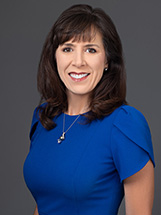
As Hawai'i Pacific University's first Chief Strategy Officer, I am responsible for leading the development, execution, and continuous evaluation of the University's strategic position, ensuring alignment with HPU's mission, vision, and values, and long-term goals. With our new strategic planning period just beginning, I am delighted to share HPU's vision for the future and highlight how we are crafting our strategic position to meet the evolving needs of our traditional and modern learners.
First, we are greatly expanding our academic portfolio to meet current and future workforce needs. In recent years, we have added graduate degrees in applied healthcare, business, and cybersecurity, and this fall, we are pleased to add new graduate degrees in construction management and data science, too. In the response to market demands, we are also exploring new graduate programs in computer science, education, engineering, medical sciences, property management, psychology, and speech language pathology. Undergraduate coursework in allied health, artificial intelligence, entrepreneurship, are also in development.
Second, HPU is committed to strengthening industry partnerships, ensuring that our faculty embed real-world, experiential learning experiences into each program. The principle of "learning by doing" is a hallmark of an HPU education, and our expanded network of alumni and industry professionals ensures that every graduate is prepared for personal and professional success starting on Day 1.
Third, we are broadening our institutional perspective by offering our programs in a variety of flexible formats and modalities. Our innovative pedagogies, including the integration of artificial intelligence, and emphasis on mastery of essential skills, ensures that HPU graduates are well-prepared to lead in the industries of their choosing. Additionally, our flexible modalities and course offerings, and our reimagined campus facilities in Honolulu and Las Vegas, are designed to inspire creativity and inventive thinking.
Higher education is changing rapidly, yet our commitment to our students remains timeless. We understand that a college degree continues to be transformative, expanding opportunities and enhancing the quality and longevity of life for those who graduate from HPU. We are honored by the thousands of students who entrust their education and their future success to us each year, and we hold dear the investment that our families, students, and alumni make when they enroll at our institution.
Together with our alumni and community partners, we are creating a university that is responsive to the needs of today and anticipates the challenges of tomorrow. As we embark on this ambitious journey, we remain deeply rooted in the values that define Hawai`i Pacific University: kuleana as we care for our students and communities; pono as we pursue righteous, integrity and truth; and aloha as we lead with compassion, grace, and humility.
Thank you for your unwavering support. We look forward to working together to build the future of higher education at HPU—one that is as innovative and forward-thinking as the students we serve.
JENNIFER WALSH, PH.D.
SENIOR VICE PRESIDENT of strategic Initiatives and Chief Strategy Officer
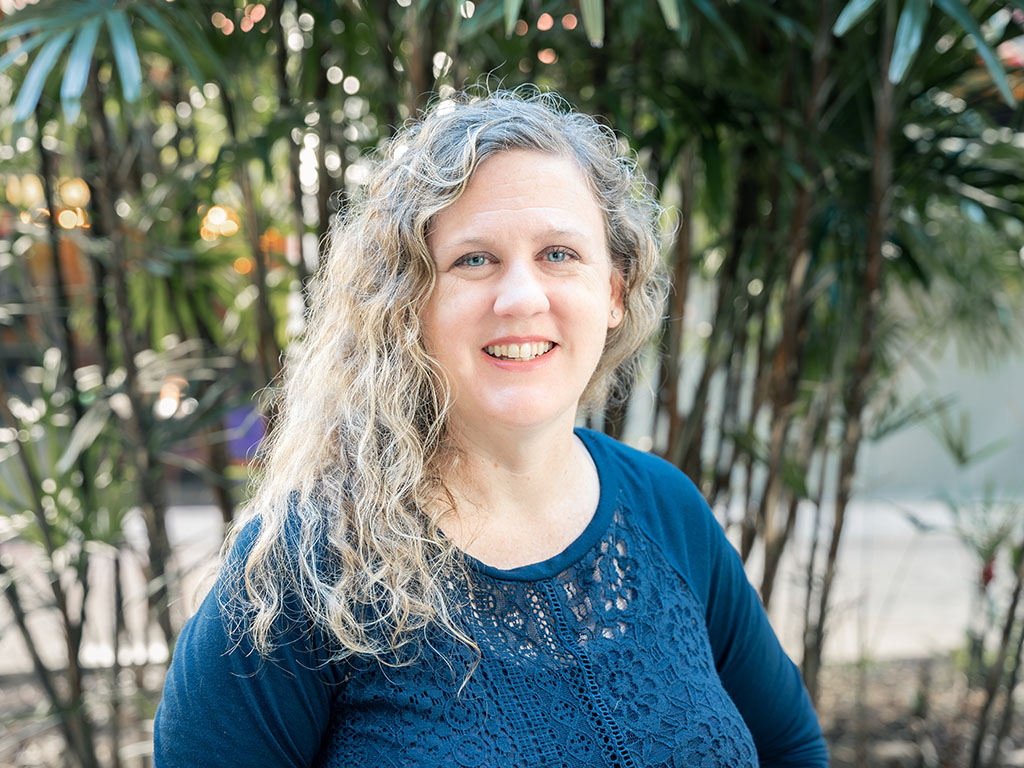
Aloha HPU ‘ohana,
Over my 25 years in higher education, I’ve seen the incredible strength that emerges when we embrace the Aloha Spirit—rooted in compassion, community, and care. This semester, I encourage each of us to show up for one another with open hearts and a willingness to support our students in every way possible.
At HPU, we have a unique opportunity to connect in meaningful ways because of our diverse campus and island home. When students embrace these values, they not only succeed academically but also thrive as individuals who make lasting contributions to our internal and global community. From the moment a student is accepted to the day they walk to the podium to receive their diploma, I want them to feel supported, energized, and ready to persevere through challenges.
This is why we’re continuing to improve initiatives to support students and alumni can play an integral part in this engagement. HPU is increasing services to support food insecurity and housing issues, expanding our perspectives to enhance global awareness and striving to improve our responsiveness to the Shark community’s needs. As the Dean of Students, I want to invite and encourage alumni to get involved with our current students. Alumni who persevered can impact current students and shape the future of HPU by creating a stronger network of mentorship and feedback.
As we move through this transformative semester, I invite each of you—alumni, students, staff, and faculty—to continue bringing your energy and commitment. Let’s make this semester one of growth, compassion, and perseverance. Your experiences and contributions are what make HPU a home for many, and together, we’ll rise to every challenge ahead.
Warmly,
Deonne Yeager
Dean of Students
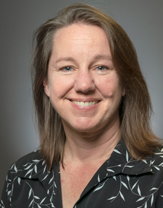
As we kick off the new academic year, I am thrilled to share the exciting developments at the College of Natural and Computational Sciences (CNCS) as HPU continues to push boundaries in innovation and growth. This fall, we opened the state-of-the-art Downtown Science Labs in Fort Street Mall, featuring new biology, chemistry, and environmental science teaching labs, as well as research labs for natural sciences, biomedical engineering and biotechnology engineering. Additionally, our enhanced engineering facilities at Waterfront Plaza now house a biomechanics lab, bolstering biomedical research. These upgrades advance our research capabilities and foster interdisciplinary collaboration, crucial for solving today’s scientific challenges.
The Makapu'u Campus, home to our Marine Science Master’s program since 2007, is now the headquarters for our entire Marine Science Department. Here, undergraduates have greater access to classes and research opportunities. In partnership with Hawaii Marine Animal Response, we’ve developed a Sea Turtle Rehabilitation and Care Center that has received support from the National Oceanographic and Atmospheric Administration and the US Fish and Wildlife Service. The Center for Marine Debris Research also continues to thrive, adding new initiatives in marine debris recycling and a minor in Plastic Circularity. All these projects highlight our commitment to sustainable solutions for our local community and the global environment.
At HPU, community engagement is integral, and we embed real-world experiences into coursework. For example, Carmella Vizza's environmental science students gain firsthand experience in fishpond management and restoration, taking advantage of Hawai‘i's unique “living laboratory” to blend academic learning with environmental stewardship.
I am incredibly proud of our CNCS faculty and students, who consistently achieve remarkable milestones—from securing prestigious grants to spearheading groundbreaking research. Their passion and innovative spirit are shaping the future of science and technology and are making a profound impact locally and globally.
Together, with our unwavering commitment to excellence and community impact, we will continue to push boundaries and drive positive change within and beyond our community.
Brenda Jensen, Ph.D.
Acting Senior Vice President and Provost

At Hawai'i Pacific University, athletics are more than just sports; they are a testament to the transformative power of education and community. "We take pride in being the public face of the university,” says Debra Snell. “Our athletes are everywhere—on campus, in the community, across our conference, at other institutions, traveling, and in between; at the airport, restaurants, grocery stores, etc. Wherever you find them, they are the ones proudly wearing the Shark uniforms.” This visibility and engagement reflect HPU's commitment to creating well-rounded individuals who excel both on and off the field. Debra's own story is a powerful example: hailing from a tiny town in Arkansas, she credits athletics and education with opening doors she never dreamed possible. "Without athletics and education, I wouldn't have had the opportunities I've been given. They've changed my life," she shares. Her journey from a small town to meeting highly motivated, energetic, and accomplished individuals underscores the life-changing impact HPU offers to its student-athletes.
HPU's Athletics Department is dedicated to fostering diversity, leadership, and holistic development. Debra explains. "Our teams reflect all kinds of people, united by their sport. You're a member of an 'ohana instantly." This sense of family contributes to higher retention and persistence among student-athletes, who benefit from strong team connections and diligent oversight by their coaches. The Athletic Department and Division 2 mantra, "Life in the Balance," ensures that students maintain a healthy balance between academics and athletics, with built-in guardrails dictating sport-related activities to prioritize their education. Moreover, the emphasis on community engagement—through mentoring, beach clean-ups, coaching younger players, hosting camps, and partnering with local schools—prepares students for life beyond college. With robust mental health services and a culture of support, HPU's Athletics Department not only develops great athletes but also compassionate, well-rounded individuals ready to serve and lead in their communities.

Q: Can you tell us a bit about your background and how you became involved with HPU?
A: I grew up in Bangladesh, in South Asia. My journey began as a Navy officer, where I served for about 14 years, ultimately retiring as a Lieutenant Commander. In 2014, I embarked on a new chapter, moving to Hawai'i to pursue my Ph.D. in Electrical Engineering at the University of Hawaii at Manoa. My research focused on microfluidics for healthcare technologies. After completing my doctorate, I began my postdoctoral research at Cornell University and UH Manoa, exploring entrepreneurship and renewable energy. A significant turning point came when I was awarded a TRISH (Translational Research Institute for Space Health) postdoctoral fellowship funded by NASA’s Human Research Program. This opportunity was my first exposure to space-related work. With this newfound passion for space, I transitioned into academia, becoming an Assistant Professor at Hawaii Pacific University. Here, I continued my work in space technologies while nurturing the next generation of engineers.
Q: Wow, that is a truly incredible background. I'm sure that wasn't an easy feat as there has been such hard work and dedication leading you up to this point, but you make it sound so seamless. Can you continue to share your insights having gone through these phases and how it affects your teaching as an Assistant Professor at HPU?
A: Before I began teaching, my career was shaped by various mentors who guided me to follow my passions. My research has always been geared toward solving human problems or addressing issues through engineering and technology. At HPU, I strive to blend academics with industry needs. Knowing my students are looking for good jobs, I tailor my teaching to develop the skills that employers seek, providing them with the resources they need to succeed.
I structure my teaching around three key aspects: skill development, academic instruction, and mentorship. My goal is not just to teach but to guide my students from their academic work into successful industry careers.
Q: I'm intrigued! How did you come to prioritize mentorship as one of your main focuses, and how have students responded to this approach?
A: Last semester, I conducted a pilot test to see if I could instill mentoring skills in my students. I asked them to participate in skill-building activities. Initially, they were hesitant due to their full schedules, but eventually, a few agreed to join a competition with me as their mentor.
HPU is a smaller university, and these students were cautious and a bit intimidated about competing against teams from larger universities. I worked to instill confidence in them, and it paid off, proving that our students have great potential. I believe that if professors like me can give a little more of their time—beyond academic training—through mentorship, we can help students develop valuable job-seeking skills. This practice of mentorship can bring out the best in our students. The goal of the pilot test was to achieve this, and it was quite successful.
Q: Can you provide a behind-the-scenes perspective on student success in recent competitions, especially as a smaller school competing against larger, well-known prestigious institutions? How did confidence and mentorship play a role in this success?
A: I’ll share one example among many from last semester. The Department of Energy hosted a competition on the HeroX platform, inviting university teams to create a business plan for energy technology. This exercise provided students with advanced skills in energy data, which encompasses not just engineering, but also economics and business factors. As students with technical backgrounds often find this interdisciplinary approach challenging, it helped that my experience in founding two startups allowed me to offer valuable advice on building business plans. This helped me mentor my students and give them a clear understanding of what they were getting into.
The competition had three phases. First, the students submitted a business plan, and upon success, advanced to the second phase, where 228 applicants were divided into 15 regional teams. HPU competed against West Coast universities, which typically have higher national ratings. Despite the stiff competition, HPU secured first place, becoming the only team from the region to advance to the finals in Austin, TX. There, multiple events prepared them for the final challenge, and competing against 28 student teams from top US universities, the HPU team secured third place. Through my mentorship, I provided comprehensive support, context, background, and insights into Return on Investment.
Their success has inspired more students to compete, eager for the experience and skills gained through such mentorship.
Q: We couldn't be prouder! Congratulations again on these major accomplishments. On that note, how has innovation influenced the recent developments within the engineering department?
A: Innovation is closely tied to research. Last year, one of my students, Greg Ball, embarked on a project to develop a textile that could protect astronauts from lunar dust. This was a pressing issue, as lunar dust poses significant risks to both astronaut and equipment safety on the lunar surface. Together, my students and I worked on creating this innovative textile, integrating an on-demand fluidic metal screen to generate electrostatic forces to repel lunar dust. Though this project is still a work in progress, our goal is to develop a working prototype and test it in microgravity.
Once we demonstrate its functionality in our lab and achieve successful testing in a simulated lunar environment, we plan to approach NASA for a grant to conduct tests, potentially on the International Space Station. This journey, from concept to potential space application, underscores the importance of combining research with practical innovation.
Q: I hope so! It feels like you're on the right track with this path. This raises an interesting question: In promoting these innovative research projects, could you discuss any partnerships or collaborations that have contributed to the department's and students' success, as well as their exposure to the industry?
A: I firmly believe in the power of partnership and collaboration. Through external collaborations, such as with industry, faculty can help develop students to join a compelling future engineering workforce. We've submitted a proposal to the NSF aimed at broadening the participation of minority students in research through industry collaboration. As part of this initiative, I'm organizing an Industry-Academic Workshop with local companies in Hawai'i to bridge the gap between industry needs for an engineering workforce and our mission as educators to prepare brilliant engineers with the skills sought by industry.
These workshops will identify research topics companies are pursuing or areas where students can participate through faculty-advised projects at HPU. This approach allows students to gain and enhance their skills, making them highly desirable candidates for the local industry.
In the future, I hope this collaboration will transform students’ capstone projects into real-world skills, preparing them to enter the workforce immediately upon graduation. The involvement of alumni in our efforts is invaluable. They can provide feedback, serve as industry partners, and offer mentorship. Our goal is to strengthen the relationships between students, industry, and alumni. Alumni who provide one-on-one guidance to students are immensely beneficial.
Q: In conclusion, what do you believe sets the engineering department apart from other programs, and what do you envision for its future growth and success?
A: The NSF has recently published a report on the representation of different minorities in STEM fields. Across Hawaii, the Pacific Islands, and other parts of the U.S., minorities are significantly underrepresented in STEM, particularly in engineering. This underrepresentation presents a unique opportunity for Minority-Serving Institutions (MSIs) like HPU. Minority students at smaller institutions like ours are crucial in filling these gaps.
Our engineering department is relatively new, but its achievements over the past few years highlight our tremendous potential. We focus on fostering diversity and inclusion, and the innovative potential of engineering to solve many human problems underscores the demand and need for this field. This focus sets us apart from many other programs. Our commitment to providing personalized mentorship and real-world experience through industry partnerships ensures that our students are academically prepared and equipped with practical skills highly sought after by employers.
Engineering is omnipresent, and the demand for skilled engineers continues to grow. At HPU, we are uniquely positioned to meet this demand by cultivating a diverse and talented pool of future engineers. Looking ahead, I envision our department growing both in size and reputation, becoming a leader in producing innovative, resilient graduates ready to tackle the challenges of tomorrow's world. Our future growth and success will be driven by our commitment to excellence in education, research, and community engagement.
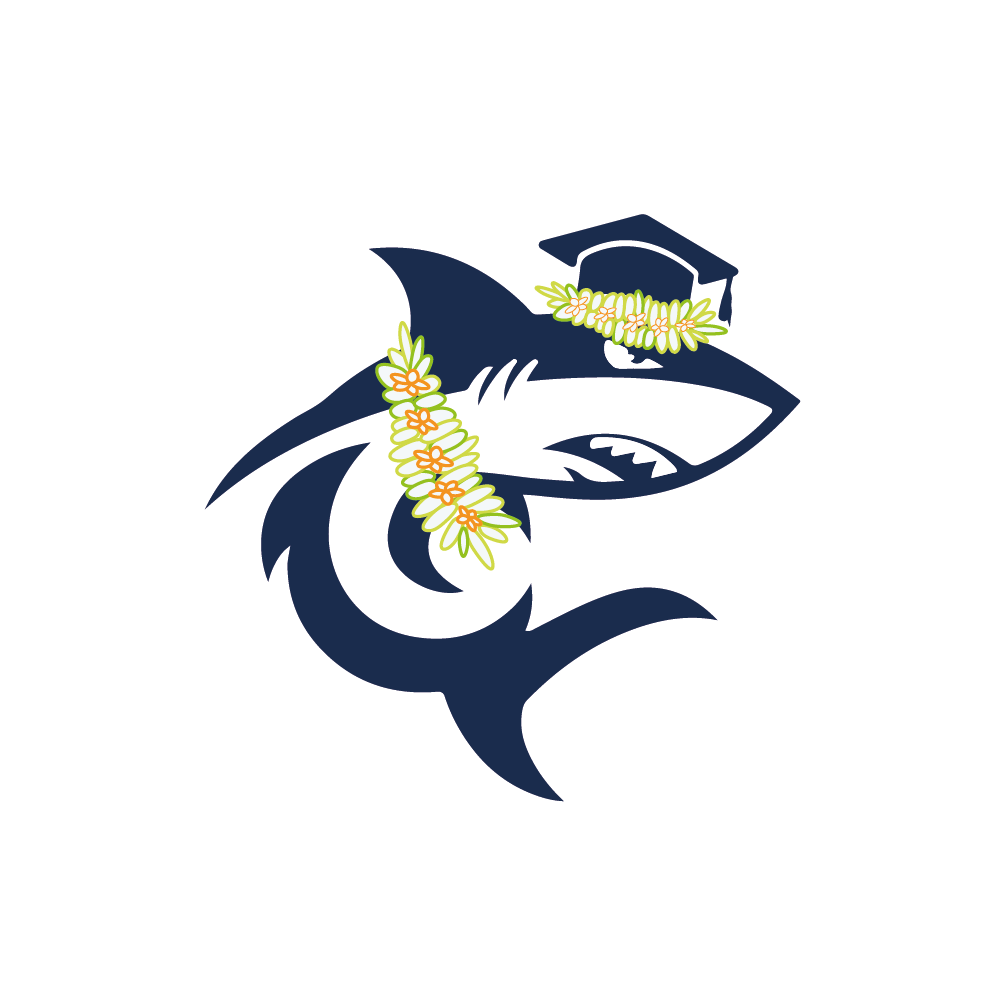
Sharks Legacy is an energetic, student-driven initiative at Hawai'i Pacific University designed to support graduating students’ transition to becoming connected alumni. Through the advice and guidance of Olivia Ngokion of the University’s Advancement staff, a diverse and talented group of students serve on the Sharks Legacy Committee. The committee—currently comprised of Ella Berge, Nora Bjoerk, Iyania Story-Cruz, and Arya Sarma—engages graduating students through various in-person activities and a dynamic social media presence on Instagram and LinkedIn. Data analytics guide the committee’s understanding of successful posts and motivates them to create even more effective content. One of their Instagram posts ranked among the top in the first quarter of 2024 across all Hawaiʻi institutions!
The Sharks Legacy Committee encourages graduating students to contribute to their class gift in celebration of their graduation, and to sign up for HPU Connect. This online platform fosters career engagement among HPU alumni. We hope all alumni sign up for HPU Connect; recent graduates benefit tremendously from your networks and experiences.
Purposeful engagement, relationship-building, and ongoing connections are at the heart of the HPU spirit. Thanks to the Sharks Legacy Committee, our newest alumni better understand the value of forever remaining a part of the HPU ‘ohana.
Don’t forget to remain connected to your HPU ‘ohana! Tell us about yourself here.
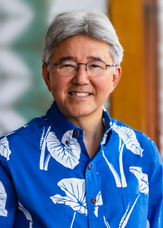
MESSAGE FROM PRESIDENT JOHN GOTANDA
Welcome to HPU’s second edition of Kai Ulu: Alumni Currents. One of the most rewarding aspects of my role is fostering relationships with our alumni community. Just in the last year, I met graduates who are successful entrepreneurs and business owners, and others who are leaders of mature industries. I met a recent graduate from Hawaiʻi, boldly launching her career in mid-town Manhattan, and a mid-career alumni couple working to address complex international cybersecurity issues.
Just like you, today’s students are from around the globe, gathering in the heart of the Pacific to experience HPU’s innovative academic programs. They work closely with world-class faculty while learning in one of the world’s most unique environments. To ensure our students are prepared not just for their first job, but for their entire careers, we continually update our curriculum and expand student opportunities for co-curricular, hands-on experiences.
One such initiative on campus is our new Maker Space—a hub dedicated to fostering entrepreneurship, creativity, and innovation. This space is a collaborative workspace equipped with cutting-edge tools and technology. HPU is driving innovation in education, and the Maker Space embodies this commitment by providing a dynamic environment where ideas flourish and new ventures take shape. I invite you to immerse yourself in the culture of innovation and creativity at Hawaiʻi Pacific University as you explore the Maker Space article.
At HPU, we are cultivating the leaders, thinkers, and innovators of tomorrow. For HPU to continue to strengthen, it is vital to have your engagement. Learn about HPU through Kai Ulu. Keep us informed of your career and life journey. Serve on panels or speak in the classroom. Give us story ideas. We’d enjoy hearing from you—and seeing you in person where possible!
It is an honor to witness the profound impact our alumni have on their communities and the world. Let’s partner together to ensure that today’s students are fully prepared to follow in your footsteps.
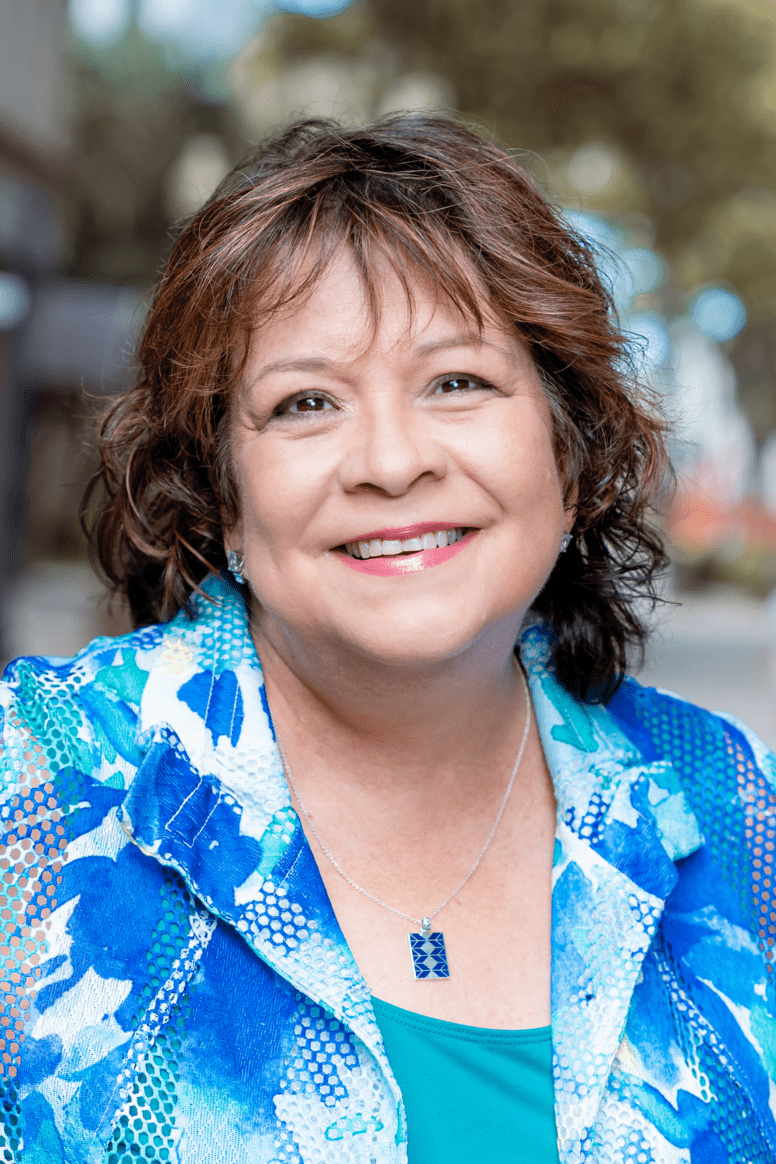 Introducing: Kai Ulu, Alumni Currents E komo mai!
Introducing: Kai Ulu, Alumni Currents E komo mai!
It is my great pleasure to introduce the first issue of Hawaiʻi Pacific University’s new monthly e-communication, Kai Ulu: Alumni Currents. As Kumu Ramsay Taum articulates below, this publication’s name was thoughtfully chosen. Kai Ulu represents a cohesive characteristic within the HPU ʻOhana—our extended family of students, alumni, faculty and staff, past, present and future. I encourage you to reminisce about your time at Hawaiʻi Pacific University as you read Kumu Taum’s message.
Each month in Kai Ulu, we will share our latest news. We will celebrate the achievements of members of our community. We will work to reconnect you with HPU and each other. We hope that these Alumni Currents will become indispensable as you discover new things about your alma mater.
Maureen C. Silva, Ph.D Vice President of Advancement

